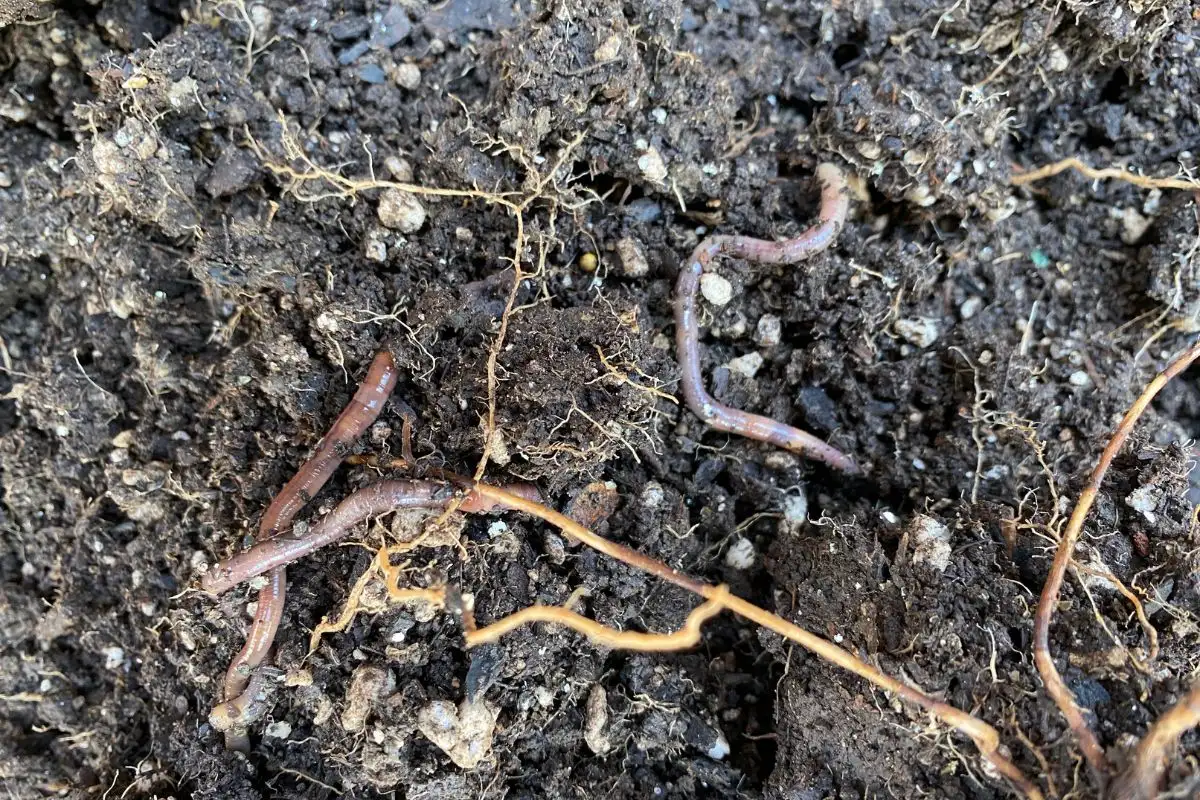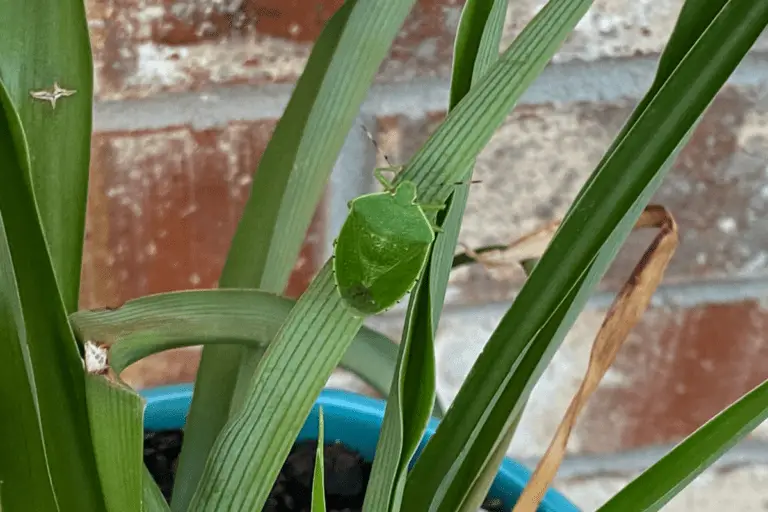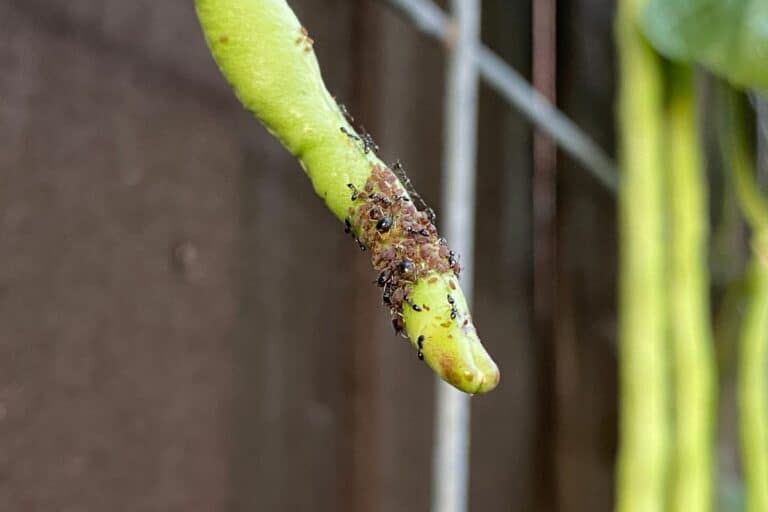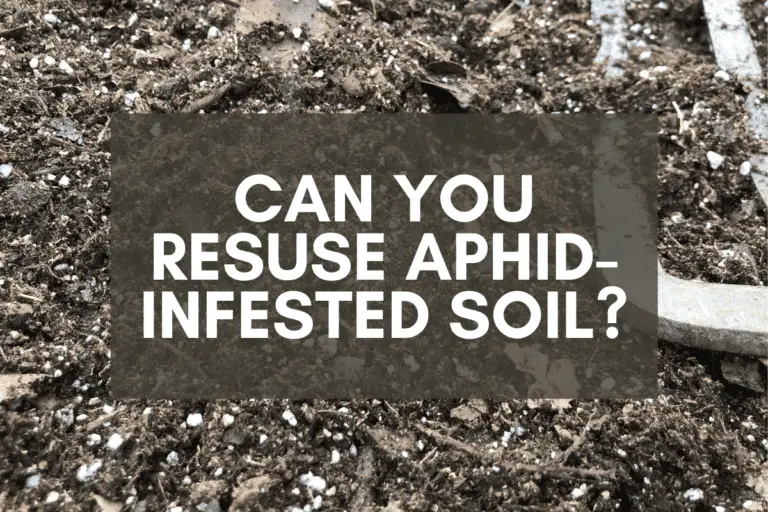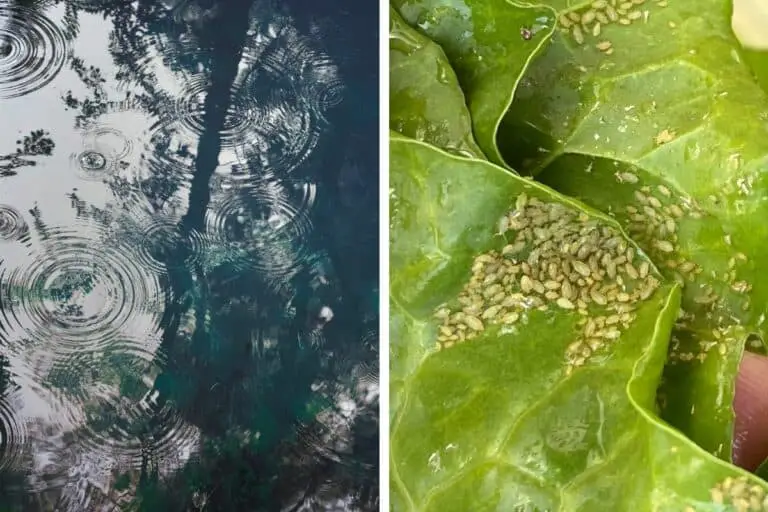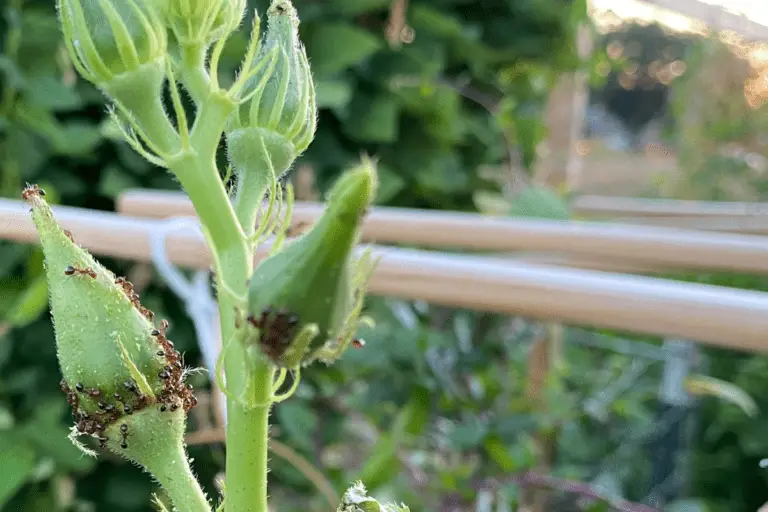Will Diatomaceous Earth Harm or Kill Earthworms?
In my many years of gardening, I’ve found diatomaceous earth (DE) to be incredibly helpful. This fine, powdery substance has worked wonders against various pests while helping my plants do their best.
But despite its benefits, I initially had some reservations about DE, primarily about its impact on earthworms. Would it harm or kill them?
Diatomaceous earth does not harm or kill earthworms since it’s designed to damage exoskeletons, and unlike many insects, earthworms lack exoskeletons. Although DE has been shown to have some negative impact on parasitic worms, existing research shows no evidence that it’ll harm earthworms.
That’s the short answer, but in this blog post, I’d like to introduce you to some of the dangers to avoid when using DE and the steps to take to ensure you’re protecting beneficial bugs and using it properly in your garden.
Here’s what I’ll cover below:
- An overview of diatomaceous earth, including its mineral makeup and the differences between food-grade and pool-grade versions.
- The impact of DE on earthworms and why it likely won’t harm them.
- How DE affects beneficial insects and how to avoid unintended harm.
- A guide to using DE responsibly, ensuring you get the pest management benefits without hurting your garden’s ecosystem.
Diatomaceous earth is an easy, effective way to manage pests in your garden, but like any pest management product, you need to know what you’re doing so that you don’t unwittingly harm your plants or beneficial bugs.
By the end of this article, you’ll have a very good sense of what to do and not to do with diatomaceous earth.
But before we begin, here are the products I use in my garden in case you’d like to do what I do.
Now that you know what you need to use DE responsibly in your garden, let’s get started!
Understanding Diatomaceous Earth: A Short Introduction

Diatomaceous earth is a naturally occurring, sedimentary rock that transforms into a fine, white powder when crushed. It originates from the fossilized remains of diatoms, tiny aquatic organisms whose cellular structures are composed of natural silica.
There are two types of DE that you might find when browsing online: food-grade and pool-grade.
Food-grade DE is the kind that’s safe for use in gardens and even as a dietary supplement for animals. On the other hand, pool-grade DE undergoes a different process that makes it hazardous for use in gardens and around animals and people, so never purchase that kind for garden use!
Regarding combating pests, the sharp, microscopic edges of DE particles can pierce the protective exoskeletons of various insects, causing them to dehydrate and die.
Here’s a list of some common insects, both good and bad, that DE can hinder, harm, or kill:
- Ants (both harmless and harmful varieties)
- Aphids
- Bed bugs
- Beetles (good and bad alike, particularly smaller varieties)
- Caterpillars
- Fleas
- Mealybugs
- Mosquitoes (although it’s not very effective on them)
- Pill Bugs
- Slugs (it’ll slow them down but not stop them)
- Snails (same as slugs, not very effective)
- Spider Mites
- Stink Bugs
- Ticks
- Wasps (both bad and beneficial ones)
- Weevils
- Whiteflies
Remember, DE is what’s referred to as a “non-selective” insecticide. It can’t differentiate between beneficial insects and pests, so it’ll harm or kill anything that has an exoskeleton, including friendly insects like lacewings, ladybugs, parasitic wasps, and pill bugs.
That’s why you need to apply DE carefully to avoid affecting beneficial insects in your garden.
Will Diatomaceous Earth Harm or Kill Earthworms?
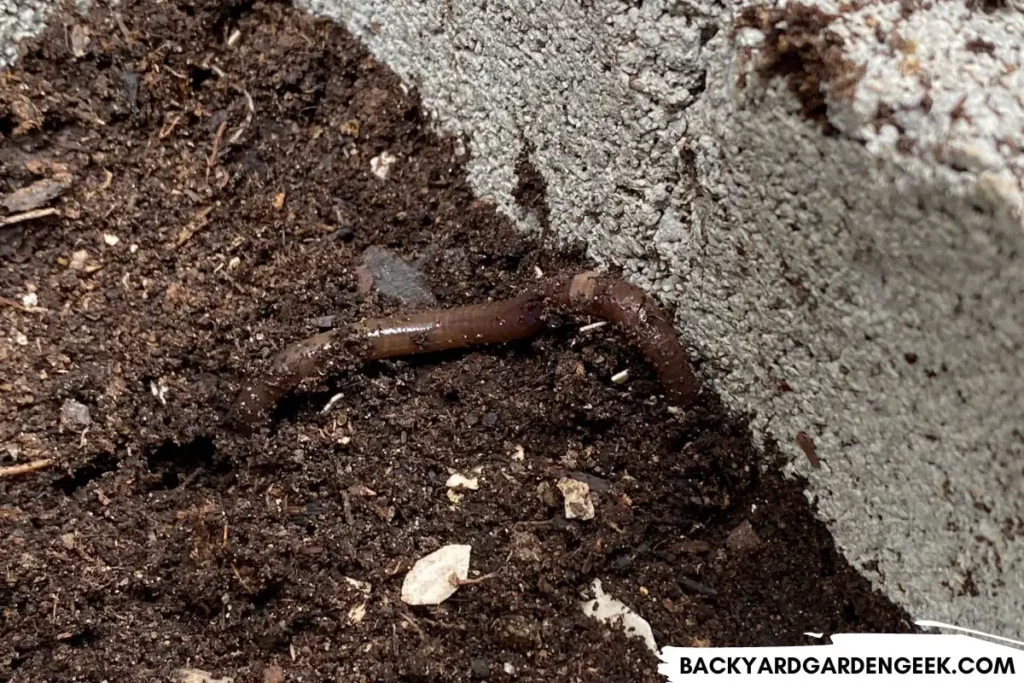
Now that we’ve gone over the insects that DE will harm, let’s look at what’ll happen (according to researchers) if earthworms come into contact with DE.
Given DE’s effectiveness against many pests, what’ll happen to them?
Here’s the good news: I’ve looked and looked and haven’t seen any compelling evidence that DE will harm earthworms.
(If you’ve seen any scientific studies that I’ve overlooked, please get in touch with me at john@backyardgardengeek.com and let me know!)
From what I’ve seen, DE doesn’t harm earthworms due to some basic differences between earthworms and the pests DE typically targets.
Many pests, like aphids and beetles, have an exoskeleton, a hard, external covering that provides support and protection. DE works by damaging this protective layer, causing the insect to lose moisture and die.
Earthworms, however, don’t have exoskeletons. Instead, they have moist, mucus-covered skin that DE doesn’t penetrate or damage. This biological difference saves our wormy friends from the damaging effects of DE.
That said, the research on DE’s impact on earthworms isn’t extensive. The scientific community hasn’t fully explored this topic, which means there may be effects we don’t yet understand.
Long story short, it’s important for all gardeners to approach diatomaceous earth usage with an attitude of informed caution.
Here are some important matters that you’ll want to bear in mind:
- Limited research means unknown full ramifications. While we’ve yet to see any negative effects on earthworms, we should remain open to new findings as more research emerges.
- DE applied to plants won’t affect earthworms since it’ll remain above the surface of the soil. You’ll often apply DE directly to your plants to combat pests, which means it won’t come in contact with earthworms living in the soil.
- Mixing DE with soil can bring it into contact with earthworms. While I’ve found no evidence of harm, you should be careful when mixing DE into the soil. Experiment as needed to see how things go in your garden.
- Interestingly enough, earthworms can ingest and expel DE without harm. Earthworms consume soil as they tunnel through it, which means they may end up ingesting some DE. However, DE passes through their systems without damaging it, although it seems they don’t particularly like the taste of DE.
All of this suggests that diatomaceous earth is safe for earthworms, but it also highlights the need for careful and considerate usage.
As a responsible gardener, you’ll need to balance the immediate benefits of pest control against the long-term health of your garden.
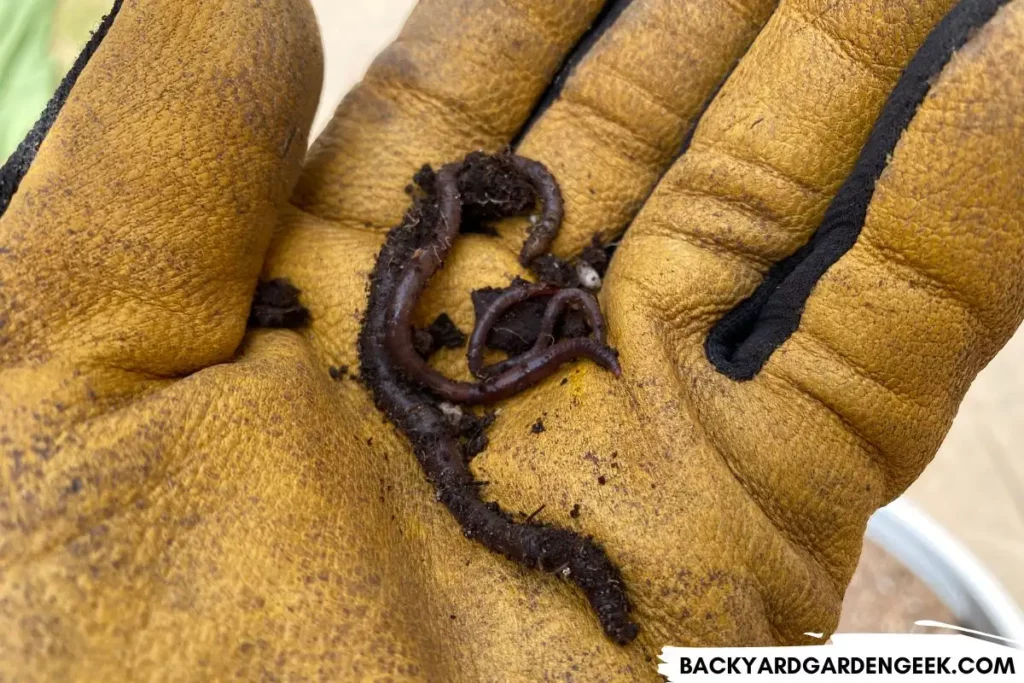
Please remember: The goal isn’t just to keep plants free of pests but to cultivate a thriving, garden ecosystem that’ll attract beneficial bugs, resist bad bugs (as much as possible), and provide you and your family with large harvests.
One final thing: You may have heard that DE can harm or kill off parasitic worms, and there’s some research to suggest that it’s effective at doing so in poultry and birds.
But please don’t compare earthworms to parasitic worms. These species have few things in common beyond the “worm” that’s in their name, so if you’ve heard that DE can stop parasitic worms, don’t jump to the conclusion that it’ll harm earthworms as well.
Will Diatomaceous Earth Harm Pollinators and Other Beneficial Insects?
While diatomaceous earth provides many benefits, there are also several potential downsides.
The most significant is DE’s impact on helpful pollinators and other beneficial insects. As I’ve previously noted, DE doesn’t discriminate between garden pests and helpful bugs—to it, an insect is an insect.
In other words, DE can kill beneficial insects as easily as it kills garden pests since bees, butterflies, ladybugs, and others all have exoskeletons. Exposure to DE can cause them the same damage it inflicts on pests.
Here’s a list of the beneficial insects that’ll suffer from DE exposure:
- Ants (if no aphids around + the ones that don’t sting or destroy plants)
- Bees
- Butterflies
- Ground Beetles
- Lacewings
- Ladybugs
- Pill Bugs (assuming a proper balance in your garden)
- Spiders
- Wasps (the helpful parasitic kind)
These creatures contribute to the health of our gardens in various ways—from pollinating flowers to aerating and composting to controlling other pests—so it’s essential to do your best to protect them when using DE.
Careful and responsible application of DE is crucial to avoid unintended harm. I’ve got a full list of instructions below, but here are 2 tips that are particularly relevant to protecting your beneficial bugs:
- Spot-check your plants for beneficial bugs before applying DE, especially since ladybugs and others like to hang out underneath leaves. If you see them, avoid those areas or wait until the insects have moved on before treating the plant.
- Use a high-quality bulb duster when applying DE. I use Dr. Killigan’s bulb duster and love it. Dusters like this allow for precise applications, helping to avoid over-spraying and reducing the chance of DE coming into contact with beneficial insects.
Remember, the goal is to cultivate a balanced ecosystem in your garden. A thoughtful approach to DE usage ensures you get the benefits without unintentionally harming your insect helpers.
Using Diatomaceous Earth Responsibly: Step-by-Step Advice
If you know the benefits and potential drawbacks of diatomaceous earth, you’ll more than likely use it responsibly and protect your earthworms and beneficial bugs in the process.
After all, the best gardens are those that provide a balanced ecosystem for every organism, from the smallest earthworms to the busiest bees.
With that in mind, here’s a step-by-step guide for applying DE safely and in a way that won’t harm beneficial insects:
1. Put on protective gear, especially on windy days. While DE isn’t harmful to humans, it can irritate your lungs if you inhale too much of it. A dust mask and goggles can protect you, particularly if you’re applying DE on a windy day when particles can easily become airborne.
2. Spot-check for beneficial insects. As I noted above, you should inspect your plants for beneficial insects before spraying DE on them. Unless you’ve got an extreme infestation, you should wait to apply DE until your beneficial friends aren’t hanging around anymore.
3. Use a high-quality bulb duster. Per my previous advice, this tool allows for precision when applying DE, reducing the chance of over-spraying or dusting areas where beneficial insects are present.
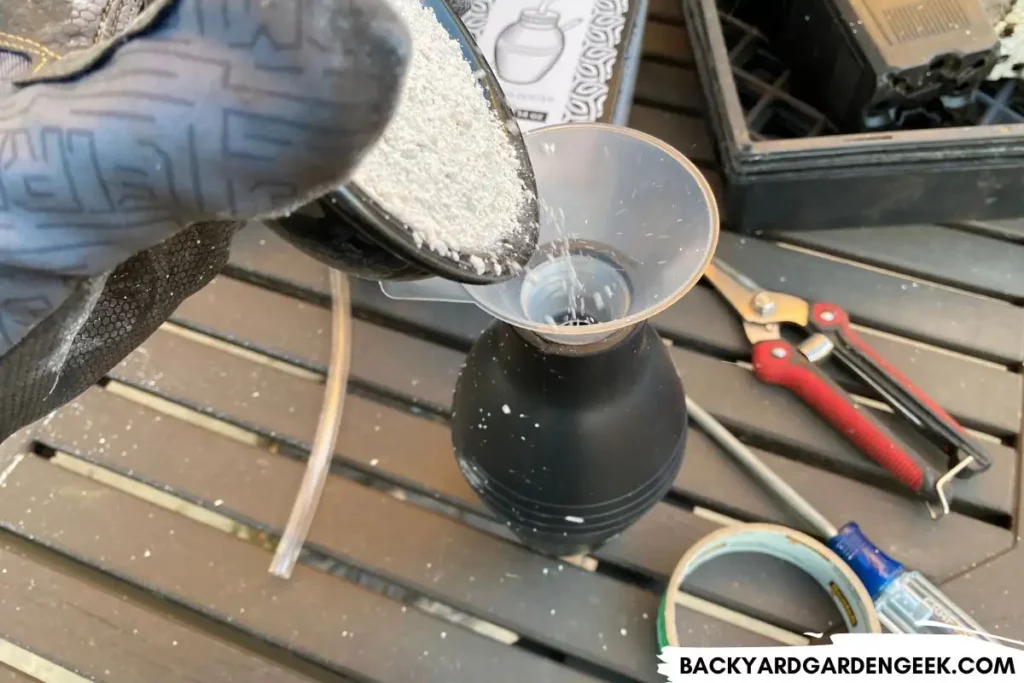
4. Wait until the late afternoon or early evening to apply. Many beneficial insects are less active later in the day, reducing the chance that they’ll come into contact with DE. This is the perfect time to apply DE…or other pest management methods such as soapy water sprays or neem oil sprays.
5. Apply DE selectively to infested areas only. There’s no need to treat your entire garden. Instead, target only those areas where you’ve noticed pest activity.
6. Reapply after rain or every 5-7 days as needed. Rain washes away DE, so you’ll need to reapply after a downpour. If there’s no rain, DE usually remains effective for about a week.
7. Use in conjunction with other pest control methods. For particularly stubborn pest problems, you can use DE alongside other natural pest control methods like soapy water sprays and neem oil. In fact, I recommend tackling tough infestations with a multi-pronged approach that involves using neem oil first, then soapy water, then a DE application.
Alongside these steps, there are a few other best practices you can follow:
- Plant lots of Allium varieties around the edge of your garden since these can help deter spider mites and other pests. I prefer garlic and onions, but you can choose what works best for you.
- Rotate your pest control methods and rely on natural approaches. As you can likely tell, I love using soapy water on soft-bodied pests and adding neem oil and DE as needed for tougher bugs.
- Most importantly, remember that healthy, well-cared-for plants are the best defense against pests. Make sure your garden is adequately watered, that your garden beds drain well, and that your plants get the nutrients they need. If you haven’t done so in years, I recommend getting a soil sample tested so you know exactly what’s going on in your garden.
By using DE responsibly, you can enjoy its benefits while ensuring that earthworms and other beneficial insects aren’t negatively impacted.
Additional Information
If you’d like to learn more about DE and how I use it in my garden—both as a pest management method and as an occasional soil amendment—I recommend taking a look at these related articles:
